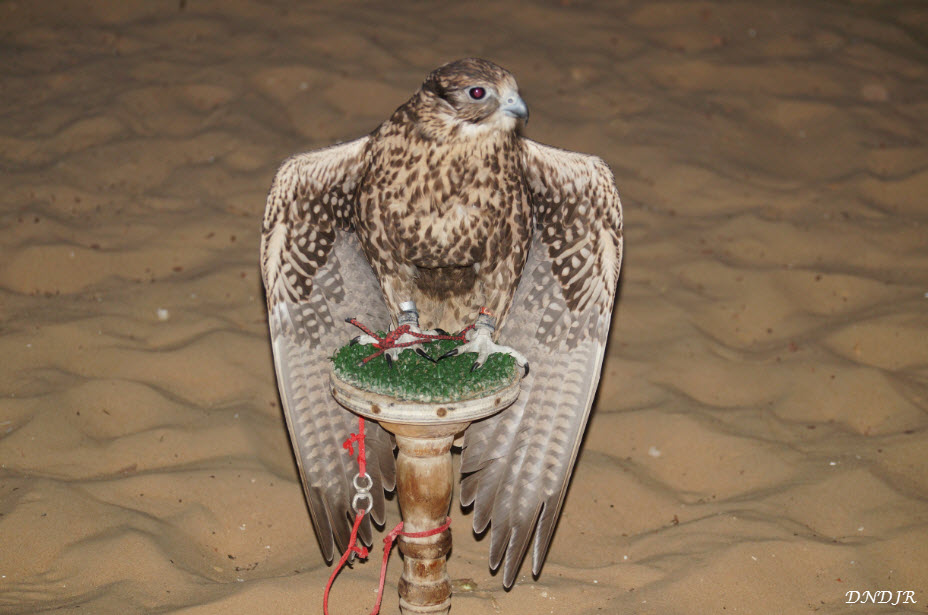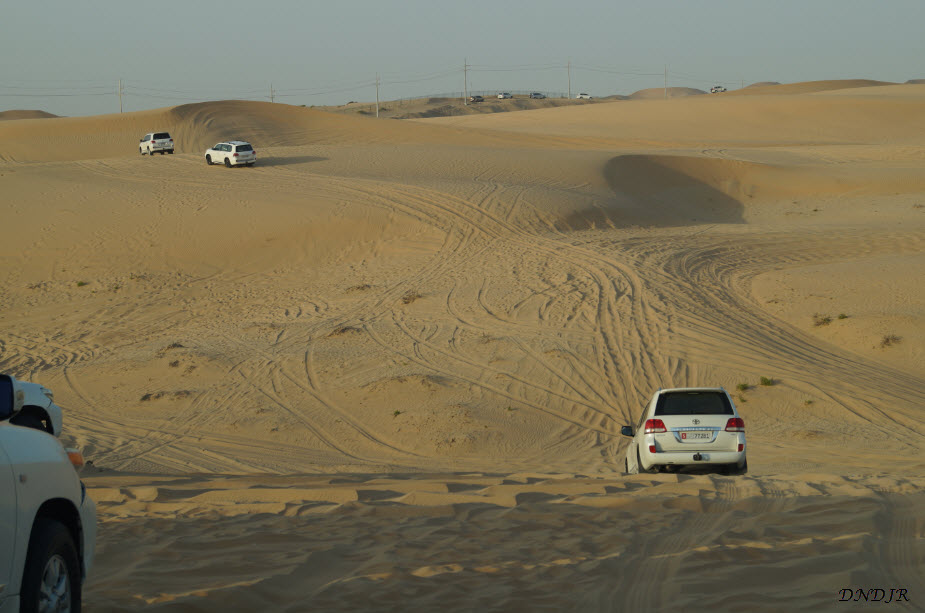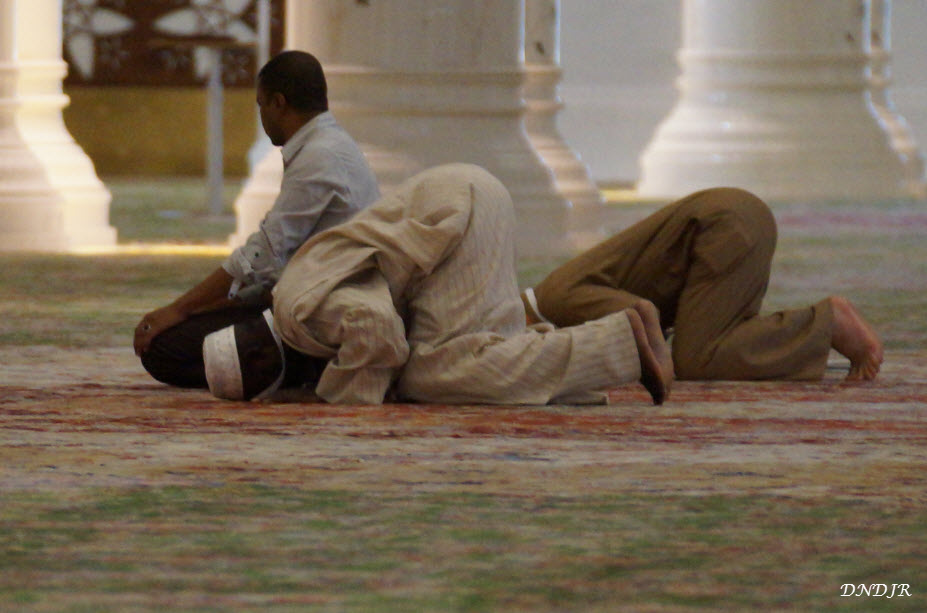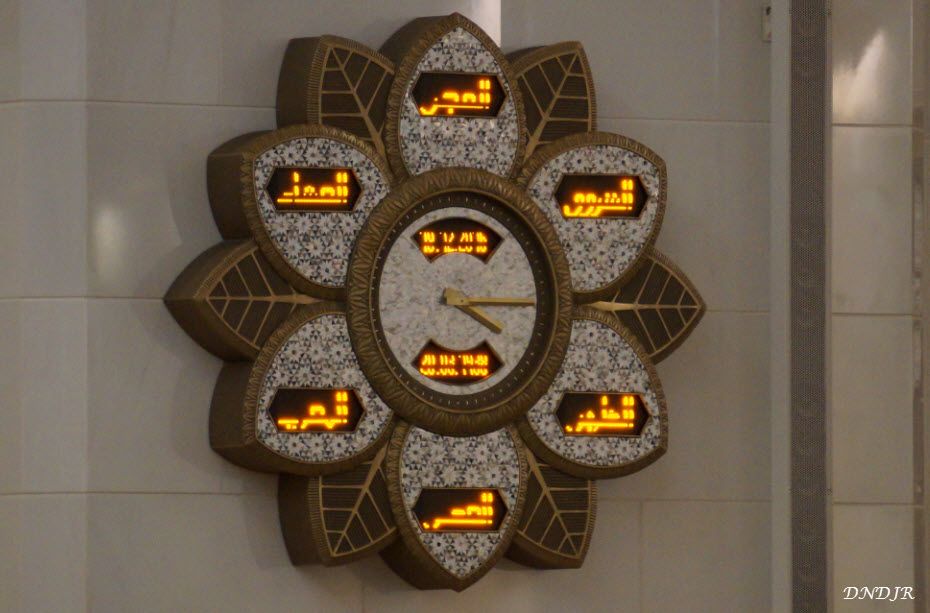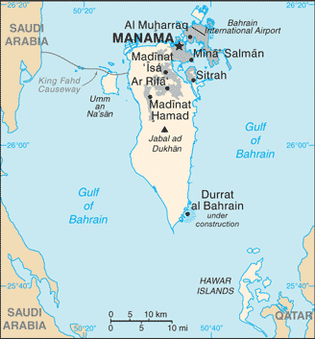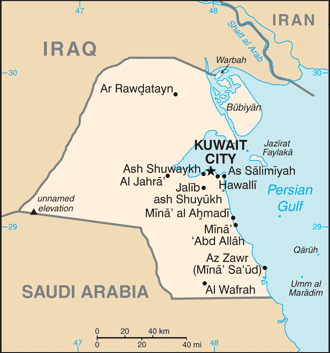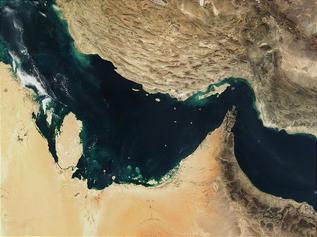The UAE and the Persian Gulf Region
|
The United Arab Emirates is located in the Persian Gulf region. It is a place that continues to dominate the news every year. The region possesses two very important natural resources that the modern world needs- petroleum and natural gas. Most of the countries also share two things in common- most of the people have Islam as their religion and most predominantly speak Arabic. But the region is also plagued by rivalries between countries, religious tensions, and a shortage of freshwater. While this page focuses on the eight countries that border the Persian Gulf, it will show how the conflicts that border these eight countries impacts the region.
|
Basic Facts About the United Arab Emirates
Capital City Abu Dhabi
Nationality Emirati
Population 5,927,482 (July 2016 est.) Note: the UN estimates the country's total population is 9,267,000; immigrants make up almost 85% of the total population, according to 2015 UN data (2016)
Ethnic Groups Emirati 19%, other Arab and Iranian 23%, South Asian 50%, other expatriates
Type of Government Federation of Monarchies
Date of Independence December 2, 1971 (from the UK)
Suffrage Limited; Rulers of the seven emirates each select a proportion of voters for the Federal National Council (FNC) that together account for about 12 percent of Emirati citizens
Major Natural Resources petroleum, natural gas
Gross Domestic Product (PPP) $667.2 billion (2016 est.)
Major Industries petroleum and petrochemicals; fishing, aluminum, cement, fertilizers, commercial ship repair, construction materials
Nationality Emirati
Population 5,927,482 (July 2016 est.) Note: the UN estimates the country's total population is 9,267,000; immigrants make up almost 85% of the total population, according to 2015 UN data (2016)
Ethnic Groups Emirati 19%, other Arab and Iranian 23%, South Asian 50%, other expatriates
Type of Government Federation of Monarchies
Date of Independence December 2, 1971 (from the UK)
Suffrage Limited; Rulers of the seven emirates each select a proportion of voters for the Federal National Council (FNC) that together account for about 12 percent of Emirati citizens
Major Natural Resources petroleum, natural gas
Gross Domestic Product (PPP) $667.2 billion (2016 est.)
Major Industries petroleum and petrochemicals; fishing, aluminum, cement, fertilizers, commercial ship repair, construction materials
Brief History and Overview of the United Arab Emirates
The United Arab Emirates was created in 1971 when they gained independence from the United Kingdom. Six Trucial States of the Persian Gulf merged to form the new country. A seventh state became part of the country in 1972. The seven emirates that make up the United Arab Emirates are: Abu Dhabi, Ajman, Dubai, Fujairah, Ra's al Khaymah, Sharjah, and Umm al Quwain.
The following photographs and captions are provided to give insight into the lives of the people that call the United Arab Emirates home.
The following photographs and captions are provided to give insight into the lives of the people that call the United Arab Emirates home.
Islam - The Dominant Religion of the United Arab Emirates
|
People who are followers of Islam are referred to as Muslims and the places where they worship are called mosques. These places of worship are usually easy to identify because they often have at least one dome and a slender tower called a minaret. Some larger mosques have several minarets. From the minaret, a muezzin calls Muslims to prayer five times a day. In modern times the muezzin projects his voice with speakers that have replaced him on the minaret.
A Very Brief History of Islam Islam is one of the major religions of the world and it has its roots in a country that borders the Persian Gulf - Saudi Arabia. The Prophet Muhammad was born in the town of Mecca in 570 A.D. Both of his parents died while he was growing up and he ended up living with his uncle. During his childhood he worked as a shepherd and then became a merchant and a trader. When he was older, after he married and had children, he would occasionally travel outside of town and stay in a cave. This is where he is said to have been visited by the angel Gabriele starting in the year 610. Over time these messages were written down and eventually became the holy book of Islam - the Quran. Conflict with other tribes caused Muhammad and his followers to eventually leave Mecca in 622 and settle in the town of Medina. This exodus with his followers is referred to as the Hegira. He eventually returned to Mecca in triumph and it was from there that Islam spread across the Arabian Peninsula. The Five Pillars of Islam All Muslims, no matter what sect they are part of, are expected to follow the "Five Pillars of Islam." These obligations are key to upholding their religious obligations in their day-to-day lives.
Sunni and Shia Islam Within Islam there are several different sects. Muslims became divided after the death of the Prophet Muhammad in the year 632. The question of who would succeed Muhammad and lead the faithful could not be determined and the followers divided into different sects. Approximately 85% all Muslims are part of one sect and are referred to as Sunni Muslims. They live in many countries around the Persian Gulf and in northern Africa. A second major sect, called Shia Muslims, make up a much smaller group and mainly live in Iran, Syria, and southern Iraq. These two sects sometimes do not get along very well and the trouble that results can be seen in conflicts in both Iraq and Syria. |
|
Brief Overview Of The Other Countries of the Persian Gulf Countries
|
Bahrain
Capital City Manama Nationality Bahraini Population 1,378,904 (July 2016 est.) Ethnic Groups Bahraini 46%, Asian 45.5%, other Arab 4.7%, African 1.6%, European 1%, other 1.2% Type of Government Constitutional Monarchy Date of Independence August 15, 1971 (from the UK) Suffrage 20 years of age; universal Major Natural Resources oil, natural gas, fish, pearls Gross Domestic Product (PPP) $66.37 billion (2016 est.) Major Industries petroleum processing and refining, aluminum smelting, iron pelletization, fertilizers |
|
Iran
Capital City Tehran Nationality Iranian Population 82,801,633 (July 2016 est.) Ethnic Groups Persian, Azeri, Kurd, Lur, Baloch, Arab, Turkmen and Turkic tribes Type of Government Theocratic Republic (theocracy) Date of Independence December 12, 1925 Suffrage 18 years of age; universal Major Natural Resources petroleum, natural gas, coal, chromium, copper, iron ore, lead, manganese, zinc, sulfur Gross Domestic Product (PPP) $1.459 trillion (2016 est.) Major Industries petroleum, petrochemicals, gas, fertilizers, caustic soda, textiles, cement |
|
Iraq
Capital City Baghdad Nationality Iraqi Population 38,146,025 (July 2016 est.) Ethnic Groups Arab 75%-80%, Kurdish 15%-20%, Turkoman, Assyrian, other 5% Type of Government federal parliamentary republic Date of Independence October 3, 1932 (from League of Nations – UK Mandate) Suffrage 18 years of age; universal Major Natural Resources petroleum, natural gas, phosphates, sulfur Gross Domestic Product (PPP) $596.7 billion (2016 est.) Major Industries petroleum, chemicals, textiles, leather, construction materials, food processing |
|
Kuwait
Capital City Kuwait City Nationality Kuwaiti Population 2,832,776 (July 2016 est.) Ethnic Groups Kuwaiti 31.3%, other Arab 27.9%, Asian 37.8%, African 1.9%, other 1.1% (2013 est.) Type of Government Constitutional Monarchy Date of Independence 19 June 1961 (from the UK) Suffrage 21 years of age; universal; members of the military and police cannot vote; all voters must have been citizens for 20 years Major Natural Resources petroleum, fish, shrimp, natural gas Gross Domestic Product (PPP) $301.1 billion (2016 est.) Major Industries petroleum, petrochemicals, cement, shipbuilding and repair, water desalination |
|
Oman
Capital City Muscat Nationality Omani Population 3,355,262 (July 2016 est.) Ethnic Groups Arab, Baluchi, South Asian (Indian, Pakistani, Sri Lankan, Bangladeshi), African Type of Government Absolute Monarchy Date of Independence 1650 (expulsion of the Portuguese) Suffrage 21 years of age; universal; members of the military and security forces cannot vote Major Natural Resources petroleum, copper, asbestos, some marble, limestone, chromium, gypsum, natural gas Gross Domestic Product (PPP) $173.1 billion (2016 est.) Major Industries crude oil production and refining, natural and liquefied natural gas (LNG) production; construction |
|
Qatar
Capital City Doha Nationality Qatari Population 2,258,283 (July 2016 est.) Ethnic Groups Arab 40%, Indian 18%, Pakistani 18%, Iranian 10%, other 14% Type of Government Absolute Monarchy Date of Independence September 3, 1971 (from the UK) Suffrage 18 years of age; universal Major Natural Resources petroleum, natural gas, fish Gross Domestic Product (PPP) $334.5 billion (2016 est.) Major Industries liquefied natural gas, crude oil production and refining, ammonia, fertilizers |
|
Saudi Arabia
Capital City Riyadh Nationality Saudi Population 28,160,273 (July 2016 est.) Ethnic Groups Arab 90%, Afro-Asian 10% Type of Government Absolute Monarchy Date of Independence September 23, 1932 (Unification of the Kingdom) Suffrage 21 years of age for males; male and female for municipal elections Major Natural Resources petroleum, natural gas, iron ore, gold, copper Gross Domestic Product (PPP) $1.731 trillion (2016 est.) Major Industries crude oil production, petroleum refining, petrochemicals, ammonia, industrial gases |




